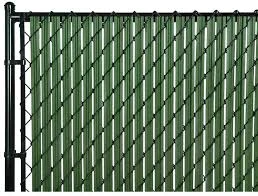Setting Up an Electric Fence A Comprehensive Guide
Electric fences are an effective and versatile solution for securing properties, managing livestock, and protecting gardens from wildlife. They deter intruders, keep animals in designated areas, and can even be used for safety purposes. However, setting up an electric fence requires careful planning and execution to ensure safety and effectiveness. In this article, we will walk you through the essential steps for a successful installation.
1. Determine Your Purpose
Before embarking on the setup process, it’s crucial to establish the purpose of the electric fence. Are you looking to keep livestock contained, protect your garden from deer, or secure your property against trespassers? Understanding your primary objective will help you choose the right materials and designs tailored to your specific needs.
2. Check Local Regulations
Before you begin installation, it is vital to check local ordinances and regulations regarding electric fences. Some areas have strict rules regarding height, visibility, and electrical output. Ensuring compliance with these regulations will prevent future legal issues and fines.
3. Choose the Right Materials
Selecting the appropriate materials is essential for an effective electric fence. The main components include
- Fence Posts Choose posts made from wood, metal, or fiberglass. The materials should be durable enough to withstand weather elements and any tension from the wire. - Electric Fencing Wire There are various types of wire available, including high-tensile steel, aluminum, and polywire. High-tensile wire is best for long distances, while polywire is lightweight and easy to handle. - Insulators These prevent the electric current from grounding out, which is critical for the fence’s effectiveness. Use insulators suited for the type of fencing material you choose. - Energizer The energizer powers the fence and determines its strength. Depending on your needs, you can choose from battery-operated, solar-powered, or plug-in energizers.
4. Plan Your Fence Layout
Once you have all the materials, it’s time to plot the fence layout. Use stakes and string to outline the intended fence perimeter. Make sure to consider any obstacles, such as trees, rocks, or existing structures, and plan the fence to accommodate these features.
It's recommended to leave a gap between the fence and property boundaries or trees to avoid contact that could short-circuit the fence.
5. Install Fence Posts
electric fence set up

Begin by installing your fence posts according to your planned layout. The spacing of the posts will depend on the height and type of wire you are using; typically, posts should be no more than 10 to 12 feet apart. Set the posts in concrete for stability, especially in areas with strong winds or roaming animals.
Once the posts are securely in place, the next step is to attach insulators. Place an insulator at each post, ensuring that it is positioned so that the fencing wire will not touch the post directly. This ensures the electric current remains on the wire, providing a shock if an animal or intruder comes into contact with it.
7. Run the Electric Fence Wire
Now, it’s time to run the electric fence wire. Start at one end of the fence, threading the wire through the insulators. Make sure to maintain tension while attaching the wire to prevent sagging. Use wire connectors to join lengths of wire if necessary.
8. Connect the Energizer
After the wire is secured, connect it to the energizer. Follow the manufacturer’s instructions carefully to ensure proper connectivity. For total functionality, ensure the energizer is connected to a grounding rod, which helps complete the electrical circuit.
9. Test the Fence
Before considering your installation complete, test the electric fence using a voltmeter or test light. Ensure the voltage level matches the requirements for your purpose—typically, livestock need less voltage than security fences.
10. Maintenance
Regular maintenance is key to keeping your electric fence effective. Inspect the fence periodically for damages, ensure it is free from vegetation that could sap energy, and check that all connections remain secure.
Conclusion
Setting up an electric fence requires careful thought and adherence to safety protocols, but it can be a highly effective solution for a variety of needs. By following these steps and using the appropriate materials, you can successfully install an electric fence that meets your specific requirements while ensuring the safety of both humans and animals.
















